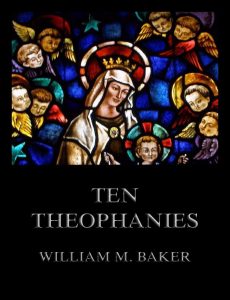Ten Theophanies – William M. Baker
The author of this book is better known by his novels than by his religious writings. If he carries his vivid and illuminating imagination into a work so different in its nature from these, as the one before us, the result is certainly to aid in the production of a more attractive and more striking presentment of his subject. The object of The Ten Theophanies is fully set forth in the remainder of the title. As according with the nine Avatars in the Brahmin theology, of which Vischnu was the ninth and most eloquent, we have here a similar presentation of Christ as he appears in the predictions and resemblances of the Old Testament. In noticing the coincidences apparent in the Biblical narrative in this direction, we cannot but be struck with their meaning, as was Dr. Baker; a meaning which he has set forth, however, in diction so varied and poetic, that the title “A Prose Poem,” applied to the work, is hardly an exaggeration.
Format: Paperback.
Ten Theophanies.
ISBN: 9783849678487
The definition of Theophany (from wikipedia.com)
Theophany (from Ancient Greek (ἡ) θεοφάνεια theophaneia, meaning “appearance of a god”) refers to the appearance of a deity to a human.
This term has been used to refer to appearances of the gods in the ancient Greek and Near Eastern religions. While the Iliad is the earliest source for descriptions of theophanies in the Classical tradition/era (and they occur throughout Greek mythology), probably the earliest description of a theophany is in the Epic of Gilgamesh.
The term theophany has acquired a specific usage for Christians and Jews with respect to the Bible: It refers to the manifestation of God to people; the sensible sign by which the presence of God is revealed. Only a small number of theophanies are found in the Hebrew Bible, also known as the Old Testament.
Publisher’s Note: This book is printed and distributed by Createspace a DBA of On-Demand Publishing LLC and is typically not available anywhere else than in stores owned and operated by Amazon or Createspace.

